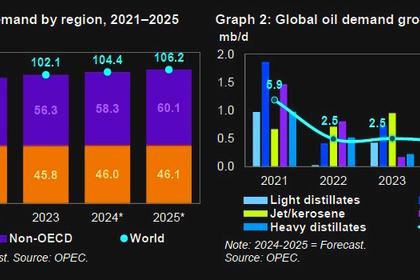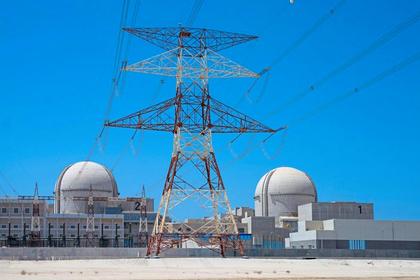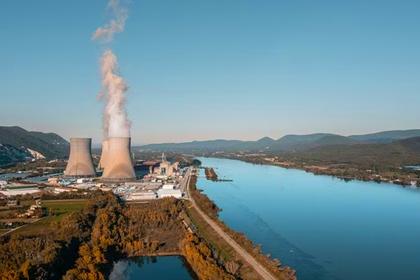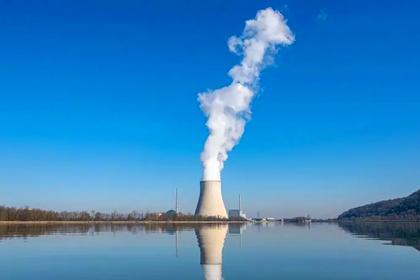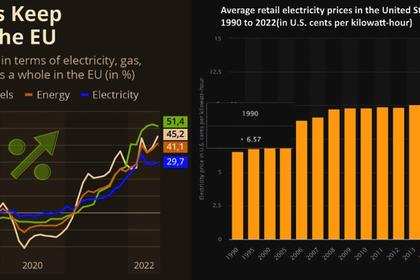GLOBAL ENERGY INDUSTRY OPPORTUNITIES 2024
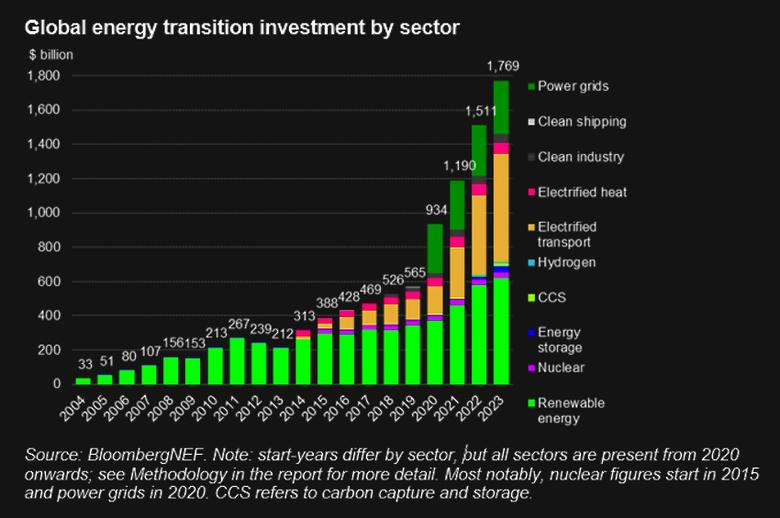
By STEPHANE BILODEAU Chairman and Chief Technology Officer, Novacab Inc.
ENERGYCENTRAL - Jan 8, 2024 - The year 2024 is projected to be a potential turning point for the power industry, as it could witness a significant shift towards renewable energy. The Economics of Energy Innovation and System Transition (EEIST) project, funded by the UK Government's Department for Energy Security, has conducted research in collaboration with the University of Exeter and University College London, which indicates that solar energy could potentially become the primary source of power globally in the next two decades. The EEIST study is based on data-driven conditional technology and economic forecasting models that determine the dominant zero-carbon power sources globally. The trajectory of current policies has set in motion a technological tipping point, where solar energy will gradually dominate global electricity markets without further climate policies.
Another report by Bloomberg suggests that clean energy and electric cars are hitting tipping points for global mass adoption. In 2023, 25 governors committed to installing a total of 20 million electric heat pumps in their states by 2030, quadrupling the current nationwide total of 4.8 million. By mid-2023, more than 125 US cities and counties had adopted policies that require or encourage new and existing buildings to transition to electric heat pump systems. It’s reasonable to expect a similar EV tipping point in the U.S. and worldwide since most impediments are universal: insufficient chargers, high sticker prices, and a lack of consumer awareness. The adoption of electric vehicles (EVs) will continue accelerating in 2024, driven by declining battery costs, supportive government policies, and increasing consumer demand.
So, let's look at some of the risks and opportunities that add up and could impact 2024. First, here are some of them. That is plenty of work on the table!
Risks:
- Carbon emissions: The energy industry is under pressure to reduce carbon emissions and transition to cleaner energy sources. This requires significant investment in renewable energy, energy efficiency, and carbon capture technologies.
- New investment and value pools: Energy investments may need to grow 4% a year to support the energy transition, with new technologies capturing more than 65% of the investments to 2035.
- Energy technologies go from niche to mainstream: The growth in sustainable fuels is driven by the decarbonization ambition in much of the latest regulations, recent investments, and technological advancement. The EEIST study confirms that the growth of solar energy in the energy mix will impact each and every year in the meantime, starting from 2024. This data-driven model of technology and economics suggests that solar will dominate even if there is no support from more ambitious climate policies. However, four "barriers" could hinder this transition: creating stable power grids, financing solar in developing economies, ensuring the capacity of supply chains, and overcoming political resistance from regions that lose jobs.
- Scaling CCUS: Carbon capture, utilization, and storage (CCUS) have the potential to contribute towards reducing carbon emissions. However, it is projected that CCUS will only have a minor impact and far away in the future, potentially reaching around 2-4 Gt by 2050. This might be due to the lack of clarity on commercially viable business models of CCUS relative to other decarbonization methods, as well as the development of relevant regulations. It is important to address these uncertainties and not invest all our eggs in CCUS, while it doesn't appear to be an efficient breakthrough in reducing carbon emissions. Otherwise, we risk wasting time and money on a solution that may not have a significant impact and not investing in more tangible and proven solutions.
Opportunities:
- Decarbonization: The industry will continue to focus on reducing carbon emissions and transitioning to cleaner energy sources. This will require significant investment in renewable energy, energy efficiency, and carbon capture technologies.
- Digitalization and machine learning tools: The power industry will continue to embrace digital technologies such as AI, IoT, and blockchain to optimize operations, improve customer experience, and enhance grid resilience. It is important to note that fossil fuel-dominated projections and models are no longer realistic, and anyone who wants to thrive in the new context of renewable energy needs to reassess their power generation scenarios.
- Distributed energy resources: The growth of distributed energy resources (DERs) such as rooftop solar, energy storage, and electric vehicles will continue to disrupt the traditional utility business model. Utilities will need to adapt to this changing landscape by developing new business models and revenue streams.
- Energy storage: The demand for energy storage solutions will continue to grow, driven by the need to balance intermittent renewable energy sources and improve grid resilience.
These risks and opportunities are complex and require significant investment, innovation, and collaboration to overcome. However, they also present opportunities for growth, innovation, and a positive impact on the environment.
To get further into what we can anticipate, six areas will see important and transformative challenges and opportunities unfold in the coming months.
- Grid Upgrades: The power industry is expected to focus on upgrading the grid to enhance reliability, resiliency, and sustainability. Transformative upgrades such as smart grids, microgrids, and energy storage systems are in the pipeline. These upgrades will help the industry manage the growing demand for electricity better, improve the efficiency of the grid, and reduce the carbon footprint of the power sector. Smart grids, for example, use advanced sensors and analytics to monitor and control the flow of electricity, enabling utilities to optimize the use of renewable energy sources and reduce the need for fossil fuels. Microgrids, on the other hand, are small-scale power systems that can operate independently of the primary grid, providing backup power during outages and reducing the need for expensive grid upgrades. Energy storage systems, such as batteries, can help balance the supply and demand of electricity, reducing the need for fossil fuels and improving the grid's reliability.
- Energy Efficiency: The energy efficiency landscape will evolve in 2024, focusing on optimizing energy consumption. The industry is on track for the advancements expected, but more can be done to improve energy efficiency. This includes investing in energy-efficient technologies, promoting energy conservation, and adopting energy-efficient practices. The power industry is expected to leverage digital technologies such as AI, IoT, and blockchain to optimize operations, improve customer experience, and enhance grid resilience. For example, AI can help predict energy consumption patterns and optimize energy generation and distribution, while IoT can help monitor and control energy usage in real-time. Blockchain can help improve the transparency and security of energy transactions, enabling utilities to manage the flow of electricity better and reduce the risk of fraud.
- Inflation Reduction Act Impact: The Inflation Reduction Act is expected to influence energy pricing, resource allocation, and investment in the sector. The impact of the act on the power industry is yet to be seen, but it is expected to have a significant impact on the industry. The act aims to reduce inflation by limiting the growth of government spending, which could impact the funding available for energy projects. However, the act could also create new opportunities for the power industry by incentivizing investment in renewable energy, energy efficiency, and carbon capture technologies.
- Cybersecurity Advances: The power sector is rightfully expected to make strides in enhancing cybersecurity within the industry. This includes fortifying systems against evolving threats, improving incident response capabilities, and adopting best practices for cybersecurity. The industry is expected to leverage digital technologies such as AI and blockchain to enhance cybersecurity. For example, AI can help identify and respond to cyber threats in real-time, while blockchain can help improve the transparency and security of energy transactions.
- Clean Energy Goals: Industry leaders are progressing towards achieving their decarbonization commitments, but more strategic steps are necessary in 2024 to ensure these goals are met. Greater investments in renewable energy, digitalization, personalization, and artificial intelligence are expected to play a pivotal role in achieving these goals. The power industry is expected to focus on reducing carbon emissions and transitioning to cleaner energy sources. This will require significant investment in renewable energy, energy efficiency, and carbon capture technologies. The industry is also expected to leverage digital technologies such as AI, IoT, and blockchain to optimize operations, improve customer experience, and enhance grid resilience.
- Policies and Regulations’ Role: Future policies will continue shaping the power sector’s future. New regulations may force innovation, leading to changes in customer call centers, energy management, and other areas. The power industry is expected to focus on developing new business models and revenue streams to adapt to the changing landscape. The industry is also likely to leverage digital technologies such as AI, IoT, and blockchain to optimize operations, improve customer experience, and enhance grid resilience.
In 2024, the power industry stakeholders are expected to undergo a significant upgrade of their infrastructure in order to respond to the increasing prevalence of renewable energy sources, electric vehicles, and distributed energy resources. This upgrade shall involve further optimization of energy consumption, the enhancement of cybersecurity, the reduction of carbon emissions, and compliance with new policies and regulations - all of which are expected to be achieved by the year 2025.
To achieve these objectives, the industry is expected to leverage digital technologies such as AI, IoT, and blockchain. AI is expected to play a key role in the optimization of energy consumption by analyzing energy usage patterns and predicting future demand. IoT will enable the monitoring and control of energy usage in real-time, thereby facilitating the identification of inefficiencies and opportunities for optimization. Blockchain technology will help to enhance cybersecurity by providing a secure and tamper-proof system for data and transaction management.
While the challenges faced by the industry are complex, they also present opportunities for growth, innovation, and positive environmental impact. By leveraging the potential of digital technologies, the industry has an opportunity to drive innovation, optimize operations, and make a significant contribution towards a sustainable future.
----
References:
https://news.exeter.ac.uk/faculty-of-environment-science-and-economy/world-may-have-crossed-solar-power-tipping-point/
https://www.bnnbloomberg.ca/electric-cars-pass-a-crucial-tipping-point-in-23-countries-1.1964078
https://www.powermag.com/deloitte-report-highlights-growth-in-renewables-challenges-for-2024/
https://www.eiu.com/n/campaigns/oct-23-risk-outlook-2024/
https://www2.deloitte.com/us/en/insights/industry/renewable-energy/renewable-energy-industry-outlook.html
-----
This thought leadership article was originally shared as part of the Energy Central Charting the Course: Anticipated Trends and Predictions for the Electric Power Industry - January/February 2024 SPECIAL ISSUE. The communities are a place where professionals in the power industry can share, learn, and connect in a collaborative environment. Join Energy Central today and learn from others who work in the industry.
-----


